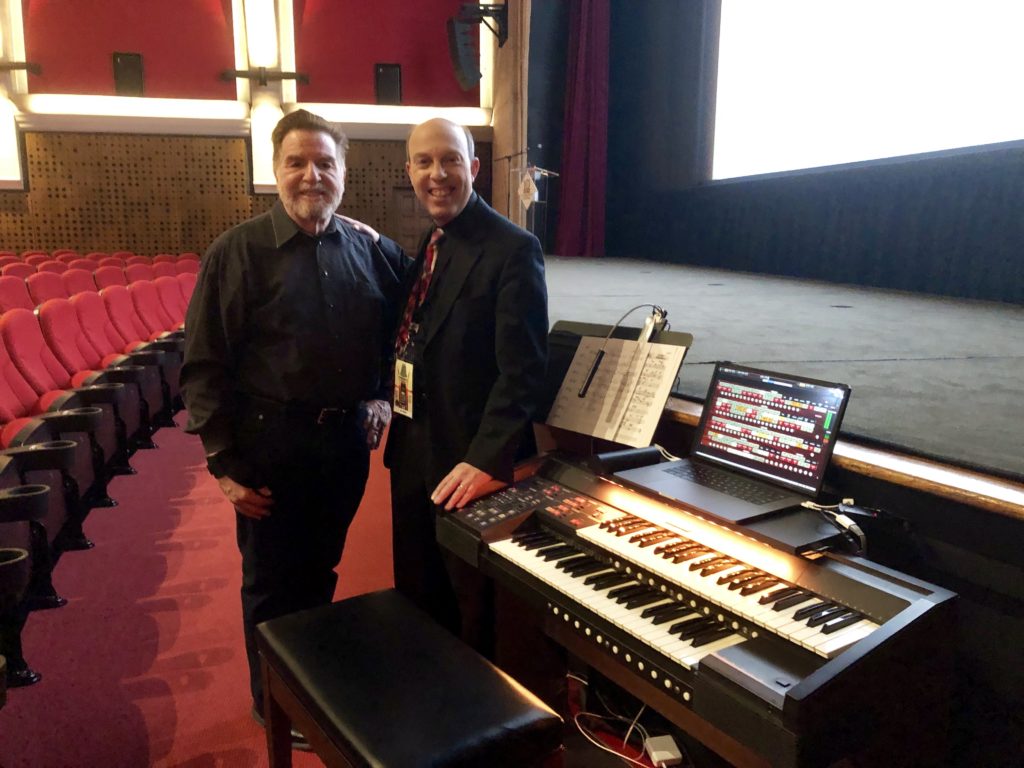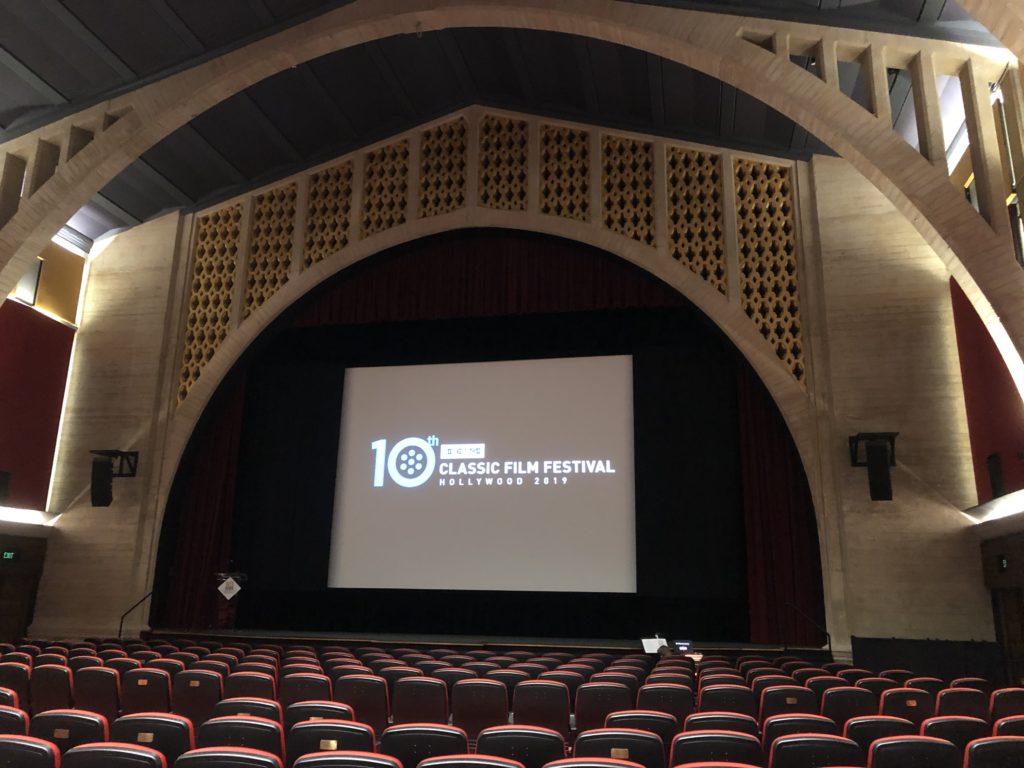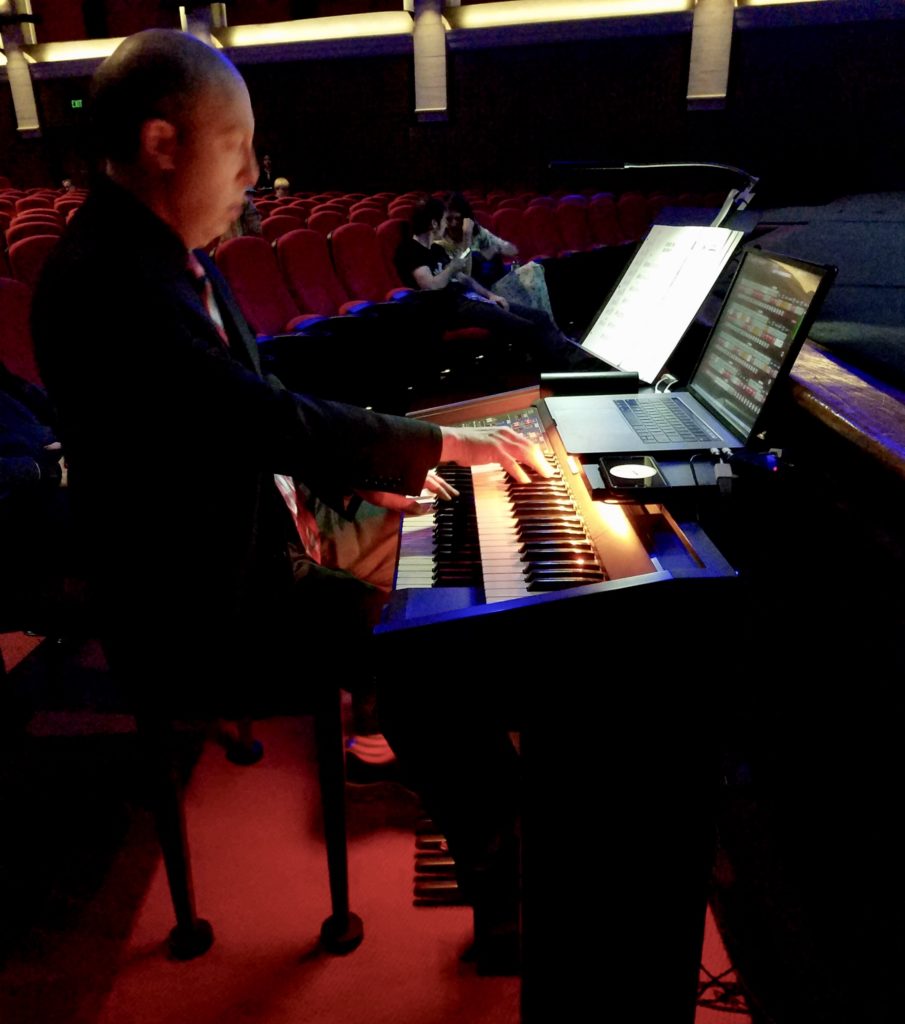Some shows I do are B.Y.O.O. — Bring Your Own Organ. Perhaps I should say “bring my own organ”, as it’s usually my idea to bring a portable Wurlitzer to your theater. Who thinks of that? Usually, the request is “can you bring a keyboard?”.
But thanks to virtual instrument software and some basic MIDI knowhow, I’ve been able to bring the sound of the theatre organ, that movie palace sound, to all of the shows I’ve accompanied at TCMFF in 2011, 2018 and 2019. Usually I put the two keyboards, organ pedals, instrument stand, bag of cables and adaptors and my backpack in the back of a rental car and drive the rig to the theatre. I’ve been doing this since 2006 at several venues I work with, from an annual show at Wesleyan, and more recently at the Ambler Theatre and the Central Pennsylvania Festival of the Arts.
Using a virtual instrument like this allows me to bring the classic, majestic movie palace sound of the theatre organ to theaters where it does not exist or happen. Several years ago, the Cinema Arts Centre on Long Island purchased the equipment for the rig so I just have to bring my MacBook. The attendees of the monthly “Anything But Silent” series that I co-program and accompany there hear theatre organ at the shows instead of an upright piano.
But the TCM festival is in Hollywood, and not an Avis rental away from my apartment. When I got the call (okay, it was an email) early in 2011 to play for some recently-identified Walt Disney cartoons at the fest that year I needed to find a keyboard to rent.

I contacted my friend Jim Henry for a recommendation for an instrument rental place. Jim lives in California, and is the creator/programmer of the Miditzer program. Miditzer is a free download that’s been around since 2003 or 2004 and allows anyone running Windows or Windows emulation software to be able to play the theatre organ. (Crossover Mac works really well for this.)
Jim asked, “Does it have to be piano?”
Jim said he had a somewhat-portable organ console that he’d be willing to rent to the festival. Made by Technics, it had its own sounds but also was fully MIDI-capable and he’d been using it with Miditzer. One of my mottos is “There’s always a workaround”, and this sounded like a great way to go. We worked it out with the festival and that spring I brought the sound of the theatre organ to one of the cinemas in the Grauman’s multiplex…right across the street from the El Capitan theatre, where there is a bona fide gian Wurlitzer.
When I was booked to play for Show People with Marion Davies at the Egyptian Theatre at last year’s festival, we did it again. By this time, I’d graduated to working with more high-end software and samples (meaning they cost money) made by Hauptwerk and Paramount Organ Works, respectively. Still, the Technics console — which Jim had fitted with a custom “Miditzer” nameplate — was ideal for this use.
The Egyptian’s own theatre organ was removed in the 1950s, and the show I played in 2018 during the TCM festival was one of the first times the sound of the mighty Wurlitzer had been heard in that cinema for silent film accompaniment.

We used the same set-up again last weekend for the Tom Mix show I played for at the 10th annual TCMFF. This year the show I played was held in the newly renovated Legion Theatre at Post 43, and the organ sounded amazing in the space. Probably the first time a silent film had been shown there, and with the authentic “sound of the silents” to boot.

movie intros. (photo by Jane Bartholomew)